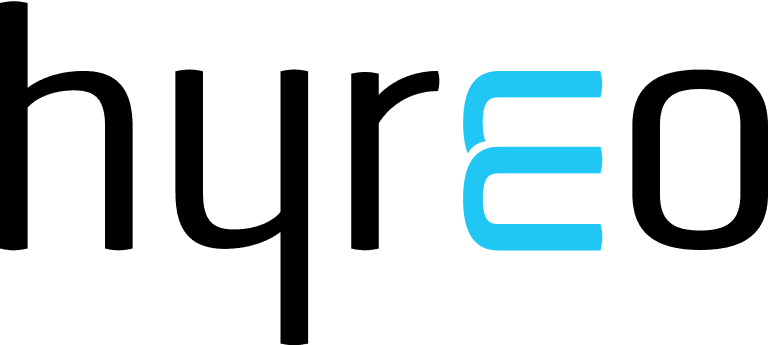A spike in hiring is observed every year from January to February, with the New Year and from September to October, right before the holidays. CNBC notes a significant surge in job postings every January, with volumes typically rising 15% from December levels. Additionally, a Robert Half survey found that 57% of respondents plan to add new permanent positions, while 39% aim to fill vacated roles, mostly in the early months of the year.The high in hiring activity could be attributed to many different factors such as companies gearing for a workforce expansion with the new business strategy with revised goals and hiring budgets. It could also do with talent finally making up their minds to make a job or career switch with the business slowdown over the holidays giving them ample time to think over their decision.
However, different markets and industries follow distinct business and hiring schedules, leading to different peaks and lulls in recruiting. Regardless of the alignment of the company’s business segment to the general peak hiring season, it is a great way to source and hire highly qualified candidates as they are the most active around this period.
So, devising a comprehensive hiring strategy for making the most of Peak Hiring Season, ahead of the surge in recruitment helps companies get prepared and stay competitive to snag top-notch candidates, helping register strong business growth and expansion.
Strategies for Peak Hiring Season
Come January, there’s a flurry of activity in the talent market with companies posting new job openings and active job-seekers hunting for the most suitable roles for them to start the new year with.
Career and job sites register the most activity with the most job posts and job searches around the months of January and February, making it a good time for companies to hire the best candidates available in the market.
Some of the best tried and tested hiring strategies to tackle the Peak Hiring Season have been elucidated further below:

#1 Strong Talent Acquisition Strategy
With companies finalizing their business strategy for the next year by the end of the 4th quarter, business and career experts predict the first few months of the new year, January & February, to be the busiest for recruiters every year. This statement is corroborated by the proportion of job posts and job searches recorded on career sites year on year. To be better prepared to handle and take advantage of this volume, it is important to plan a few months ahead, using the historic hiring data (# of open positions, applications received, interviews scheduled etc.) of the past few years to guide the creation of the new year’s Talent Acquisition Strategy.
Identify the roles to be fulfilled with the Peak Hiring Season in alignment with the customer requirements and the company growth opportunities, helping map the hired candidates accordingly. Also delineate the process to be followed for each segment of the openings such as client roles, internal entry-level positions, specific technology roles etc.), helping run the hiring process at a higher efficiency at the time of the Peak Season.
#2 Strong Recruitment Funnel
Anticipating a high volume of active candidates, companies must review, rank and order their sources in order to attract the best qualified candidates of the active candidates. Adopt a hybrid hiring approach to attract candidates, both the traditional and outreach hiring programs to get a strong recruitment funnel for the company. Invest in building a strong talent pipe-line from diverse sources of talent such as employee referrals, past applicants, passive candidates, recruitment agencies, colleges etc. to amplify the brand reach and improve the chances of getting the best suited candidates for the position.
#3 Social networking
Social media recruitment has proved to be an effective strategy to connect and engage with highly qualified talent. Use professional sites like LinkedIn and Twitter to source good candidates and also informal forums like MeetUps & EventBrite to expand the hiring network and connect with thought leaders and the brightest talent to help improve the company business value.
Personalized messaging on LinkedIn and other social media also helps establish a connection with them. The holiday season may also provide formal virtual and informal in-person opportunities to meet talent on the lookout for good roles. Leverage networking to connect, forge and nurture long-term relationships with potential candidates, enabling them to be activated at a relevant time in the future.
#4 Leverage Technology
With the volume of applications predicted, it is important to invest in scalable recruitment tools and software such as ATS & CRM platforms to automate workflows and streamline the overall recruitment process, helping enhance recruiter efficacy as well as the candidate experience at scale. Collaboration tools help improve the effectiveness of hiring with increased quality of hires onboarded during a peak hiring season. These tools provide enormous benefits in terms of saving recruiter time and effort and improving their effectiveness. These are especially beneficial for high-volume hiring, with significant cost and effort savings.
#5 Simplify hiring process
Rationalize the entire hiring process to enable higher recruiter productivity as well as enhanced candidate experience. With the high volume of candidates in the market, it is imperative to clearly articulate the EVP through appealing job posts and JDs to not miss out on potential candidates. It is also key to stay competitive with a number of companies vying for the top talent. Towards that, ensure that the end-to-end recruitment process, starting from JDs up until onboarding is optimized to attract the best candidates through appealing branding and deliver the best candidate experience all the way through.
#6 Plan Ahead for Peak Hiring
Key to cracking any hiring spree, not just the Peak Season one, is to have the hiring house in order. This entails having any and all aspects of the Peak Season Hiring process to be planned and prepared for way ahead of the actual event. So, the candidate sources, the different collaboration and productivity tools, various templates and documents must be ready ahead for appropriate utilization during the Peak Hiring Season.
Some of the ways to be prepared for the actual event are given below:
- Identify the various candidate sources in line with the company strategy and values. If Diversity is a key goal, ensure that the appropriate sources as well as the partnerships & sponsorships are in place at least 6 months in advance
- Leverage augmented writing tools to attract the best talent with bias-free & gender agnostic JDs and job posts
- Get support from employees to not only get referrals but also to spread the word on hiring through their social media handles and personal networks
- Set up the interview panels with clear operating guidelines, expectations and responsibilities during the interviews
- Create checklists and various templates to get the hiring team through the Peak Hiring Season hassle free
- Ensure all partners and vendors (sourcing, assessments, onboarding, background checks etc.) are informed of the peak in hiring expected to allow them to plan and support accordingly
- Prioritize the hiring events for the year and reschedule the other low volume, low priority ones to later months in the year
Wrapping Up
Every year, companies go through the wild scramble to onboard talent in large numbers to drive their business growth and expansion plans. While it is easy to get lost in this chaos, companies can turn this challenge on its head and use it to their advantage.
A well planned, proactive approach to Peak Hiring Season with a comprehensive strategy, reinforced with key learnings and best hiring practices enables a hassle free recruitment. Leveraging a scalable recruitment CRM platform with automated workflows and other productivity & collaboration tools helps improve recruitment efficacy, lower costs and hire top-notch talent with a superior candidate experience.
Recommended Reads
6 Key Challenges & Top Strategies for High-Volume Recruiting
7 Talent Acquisition Strategies for 2023
FAQs on Peak Hiring Strategies
What are the current recruiting trends?
The recruiting trends of 2022 are based on the candidate driven nature of the highly competitive labor market. They are as follows:
1. Altered work situations with majority of the talent wanting flexibility and work-from-home leading to more part-time and gig workers
2. Candidate experience is key to attracting and hiring highly skilled talent
3. Leveraging Recruitment tools & software for hiring efficiency and velocity powered by automation & AI
4. Higher focus on making the workforce more diverse with fair and inclusive practices
What time of the year do companies hire most?
January and February followed by September and October are typically the busiest hiring months of the year, right after the New Year and right before the holiday season. During these seasons, the talent market registers the maximum activity with companies posting new jobs and opportunities with loads of active job-seekers looking for the best suited opportunities for them to shift into. The key drivers for the hiring activity around the new year are the business growth plans and the subsequently approved hiring budgets for the companies, whereas the September to October time frame corresponds to the academic year, indicating a fresh start for job seeking candidates.
What are the 7 steps of the recruitment process?
The recruitment process can be divided into 7 stages covering the activities from sourcing to hiring to onboarding the candidates. The 7 stages of the recruitment process are as follows:
1. Preparing the job description
2. Sourcing candidates
3. Screening candidates
4. Selecting & interviewing candidates
5. Hiring a candidate
6. Post offer candidate engagement
7. Onboarding the employee
What is Preparing in the recruitment cycle?
Preparing in the recruitment life cycle refers to the preparation of a candidate persona with ideal candidate characteristics aligned to the company’s vision and culture, which is further translated into a clear job description. A clear and crisp articulation of the EVP in the JD with the responsibilities are essential to capture the attention of top candidates, helping engage with them appropriately.
What are five 5 recommendations for good hiring practices?
Top 5 hiring recommendations to increase a company’s chances of hiring stellar candidates is as follows:
1. Create a strong Employer Branding
2. Create bias-free and inclusive job posts and JDs
3. Employ creative candidate outreach programs such as social & professional networking, building talent communities, partnering with and sponsoring key groups
4. Create a strong recruitment funnel of potential and passive candidates
5. Create a strong talent marketplace, enabling talent mobility



